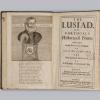Cinnamon, peppercorns, nutmeg and cloves
External links
Commentary
Global exploration during the fifteenth and sixteenth centuries completely changed how spices made their way to Europe. Up until the fifteenth century, spices were primarily traded down the Silk Road, an ancient trade network that connected southern Europe to Asia. They were passed through Venetian and Genoese merchants, who sold them to western Europeans with a price marked up by 10 up to 100 times. However, after the fall of Constantinople and the rise of the Ottoman Empire, trading spice became less profitable and prices increased. Spain and Portugal saw this as an opportunity to search for alternative routes to trade spices.
Columbus' first voyage, which was sponsored by the Spanish Crown, aimed to find a westward route to Asia in order to obtain spices directly from their origin, rather than traveling down the Silk Road and enduring expensive taxes. He instead travelled West across the Atlantic and arrived in the Bahamas. While he was unsuccessful in his original aim, Columbus’ discovery was invaluable to the spice trade, as he was able to find different, previously unknown spices in the New World. These included chili, vanilla, and allspice.
Indian spices, such as those featured in the exhibition, were also made more accessible by exploration during this period. In 1497, Vasco da Gama became the second man (after Bartolomeu Dias) to circumnavigate the Cape of Good Hope, and the first to successfully sail to reach India from this course. He returned to Europe with a collection of cloves, nutmeg, cinnamon, ginger and peppercorns.

